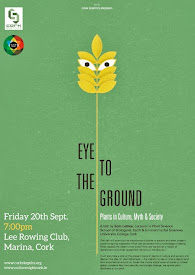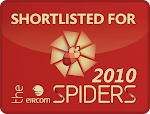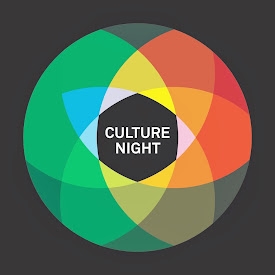A Chat With Spotticus
He's easily the most famous Giraffe on Twitter and his tweets from the Natural History Museum in Dublin are followed by hundreds of eager followers. Now, in an exclusive interview, Spotticus tells all about life on Merrion Street and what it's like being an endangered species.
Hi Spotty….may I call you spotty?
Yes- but only because you asked nicely....
So, you’ve become a bit of an internet celebrity of late. Whose idea was it to let you loose on Twitter?
Well I’d only really found out about this twitter lark when the visitors returned to the museum after the re-opening in 2010 (One advantage of being so tall is you can look over people’s shoulders as they tweet on their mobiles). So I decided it would be a good way (the only way?!?) to converse with my public. To overcome the hoof disadvantage to typing, I have a human collaborator here who helps me tweet. One of the chimps did offer to type, but his spelling is appalling.
Are you enjoying your new found fame?
I enjoy the idea of having followers- it reminds me of my life in the herd before I came to the museum.
How long have you been living/working in the NH Museum?
I’ve been here since 2003- I was brought over to Dublin from the Netherlands by the lovely Leon Bouten and his family, who are taxidermists that work with the museum from time to time.
What’s your history? Where were you working before Dublin?
Well I’m a lot older than I look- I lived in a wildlife park in the Netherlands until 1965. The Boutens kept me in storage from then until 2002, when Dublin got in contact looking for a new giraffe exhibit- and that was that!
Children in particular seem to love you and your pals in the museum. What do you think is the attraction?
Well when was the last time you stood next to a tiger?? The advantage with the museum is that you can stand next to your favourite animal and see how big they are in relation to you. You can’t to that anywhere else- well you could try, but then you run the risk of getting eaten, or squashed… or squashed and then eaten…
Is education and working with schools a big part of the museum’s job?
Absolutely - there is so much to learn about species, habitats, endangerment and extinction and the museum is the ideal location to do just that. It’s important that people are aware of environmental issues and that we help teachers educate their students about these subjects. The education department here do lots of workshops for schools- but I think they could use a few more giraffe anecdotes.
Some people call your home a “museum of a museum” is this something you’re proud of?
I think so! It was Stephen Jay Gould who first said that about us- we are one of the oldest natural history museums, and one of a handful of cabinet style museum left in the world. You could say the museum is an endangered species of its own. Many of the museums who updated their galleries in the 1980’s and 1990’s are now returning to the cabinet style.
The Rothschild giraffe was recently added to the Red List of endangered species. How does this make you feel?
I couldn’t believe it- giraffes have never been on the Red List before! There a 9 recognised sub-species of giraffe and us Rothschilds (Giraffa camelopardalis rothschildi) are particularly distinctive as we have no markings on our lower legs.
The IUCN, who compile the Red List of Endangered Species, estimate there are fewer than 670 individuals remaining in the wild. The drop in numbers is blamed on agricultural development, human settlement and poaching. There are only a few small populations now remaining in Kenya and Uganda, and they are isolated from each other, so they unable to interbreed.
The situation for us is now critical and the IUCN and the Giraffe Conservation Foundation are doing great work to try protect us. I should also say them museum staff look after me very well too- hoof shines, mane trims… the odd vacuum clean now and again…
Do you think places like the NH Museum have a role in promoting conservation?
Definitely- as well as educating the public and housing some extinct species, all large natural history collections have the unique position of supplying “ancient” DNA to scientists, who use this information when studying animal populations. This in turn helps the conservation of several species.
Besides your good self (obviously) is there any other particularly interesting ‘stars’ of the museum that you would recommend visitors see?
There are lots of different characters here- the visitors love the lions, tiger, sharks and all those other vicious creatures! The Giant Irish Deer and very impressive, with their 3-metre wide antlers! Also on the ground floor, if you can find them, there is an eel that choked on a frog and Ireland’s biggest goldfish...
Are you getting many visitors these days? Are school holidays your busy period?
We are so busy it’s unbelievable- mini-humans everywhere! I hear we’ve had a 10% increase in visitors in 2011- 300,000 people in one year! The summer season which stretches from April to August is always the busiest with school tours, summer holidays and tourists. We love our visitors because they pass their love of us from one generation to the next which constantly keep us popular!
I see the keepers have opened the ‘Discovery Zone’ in the museum. What’s that all about?
That’s a new area in the museum which is used to host events like storytelling, school workshops and public handling sessions. The zone provides a space for visitors to look at and learn about the different species the line on land and in the water. There are two carts with lots of animals to look at and learn about. An added bonus is that you are allowed to touch some of the animals- Nessa the Bager loves getting scratched behind her left ear....
Anything else we should know about?
Cheung the Giant Panda has had a dye job.
Many thanks to Spotticus for taking the time to answer my questions and to Spotty's colleagues at the NHM for facilitating our little chat. You can visit Spotticus and his friends at the Natural History Museum from Tuesdays - Saturdays and admission is FREE!
You can also follow Spotticus on twitter @SpotticusNH
Hi Spotty….may I call you spotty?
Yes- but only because you asked nicely....
So, you’ve become a bit of an internet celebrity of late. Whose idea was it to let you loose on Twitter?
Well I’d only really found out about this twitter lark when the visitors returned to the museum after the re-opening in 2010 (One advantage of being so tall is you can look over people’s shoulders as they tweet on their mobiles). So I decided it would be a good way (the only way?!?) to converse with my public. To overcome the hoof disadvantage to typing, I have a human collaborator here who helps me tweet. One of the chimps did offer to type, but his spelling is appalling.
Are you enjoying your new found fame?
I enjoy the idea of having followers- it reminds me of my life in the herd before I came to the museum.
How long have you been living/working in the NH Museum?
I’ve been here since 2003- I was brought over to Dublin from the Netherlands by the lovely Leon Bouten and his family, who are taxidermists that work with the museum from time to time.
What’s your history? Where were you working before Dublin?
Well I’m a lot older than I look- I lived in a wildlife park in the Netherlands until 1965. The Boutens kept me in storage from then until 2002, when Dublin got in contact looking for a new giraffe exhibit- and that was that!
Children in particular seem to love you and your pals in the museum. What do you think is the attraction?
Well when was the last time you stood next to a tiger?? The advantage with the museum is that you can stand next to your favourite animal and see how big they are in relation to you. You can’t to that anywhere else- well you could try, but then you run the risk of getting eaten, or squashed… or squashed and then eaten…
Is education and working with schools a big part of the museum’s job?
Absolutely - there is so much to learn about species, habitats, endangerment and extinction and the museum is the ideal location to do just that. It’s important that people are aware of environmental issues and that we help teachers educate their students about these subjects. The education department here do lots of workshops for schools- but I think they could use a few more giraffe anecdotes.
Some people call your home a “museum of a museum” is this something you’re proud of?
I think so! It was Stephen Jay Gould who first said that about us- we are one of the oldest natural history museums, and one of a handful of cabinet style museum left in the world. You could say the museum is an endangered species of its own. Many of the museums who updated their galleries in the 1980’s and 1990’s are now returning to the cabinet style.
I couldn’t believe it- giraffes have never been on the Red List before! There a 9 recognised sub-species of giraffe and us Rothschilds (Giraffa camelopardalis rothschildi) are particularly distinctive as we have no markings on our lower legs.
The IUCN, who compile the Red List of Endangered Species, estimate there are fewer than 670 individuals remaining in the wild. The drop in numbers is blamed on agricultural development, human settlement and poaching. There are only a few small populations now remaining in Kenya and Uganda, and they are isolated from each other, so they unable to interbreed.
The situation for us is now critical and the IUCN and the Giraffe Conservation Foundation are doing great work to try protect us. I should also say them museum staff look after me very well too- hoof shines, mane trims… the odd vacuum clean now and again…
Do you think places like the NH Museum have a role in promoting conservation?
Definitely- as well as educating the public and housing some extinct species, all large natural history collections have the unique position of supplying “ancient” DNA to scientists, who use this information when studying animal populations. This in turn helps the conservation of several species.
Besides your good self (obviously) is there any other particularly interesting ‘stars’ of the museum that you would recommend visitors see?
There are lots of different characters here- the visitors love the lions, tiger, sharks and all those other vicious creatures! The Giant Irish Deer and very impressive, with their 3-metre wide antlers! Also on the ground floor, if you can find them, there is an eel that choked on a frog and Ireland’s biggest goldfish...
Are you getting many visitors these days? Are school holidays your busy period?
We are so busy it’s unbelievable- mini-humans everywhere! I hear we’ve had a 10% increase in visitors in 2011- 300,000 people in one year! The summer season which stretches from April to August is always the busiest with school tours, summer holidays and tourists. We love our visitors because they pass their love of us from one generation to the next which constantly keep us popular!
I see the keepers have opened the ‘Discovery Zone’ in the museum. What’s that all about?
That’s a new area in the museum which is used to host events like storytelling, school workshops and public handling sessions. The zone provides a space for visitors to look at and learn about the different species the line on land and in the water. There are two carts with lots of animals to look at and learn about. An added bonus is that you are allowed to touch some of the animals- Nessa the Bager loves getting scratched behind her left ear....
Anything else we should know about?
Cheung the Giant Panda has had a dye job.
Many thanks to Spotticus for taking the time to answer my questions and to Spotty's colleagues at the NHM for facilitating our little chat. You can visit Spotticus and his friends at the Natural History Museum from Tuesdays - Saturdays and admission is FREE!
You can also follow Spotticus on twitter @SpotticusNH




























0 comments:
Post a Comment